Check out the video where Kim tests the Holbein Gouache Primary Mixing Set. It made nearly 200 colours by charting the gradual mixes with black.
Start with Just Three Colours
Choose any three colours and paint them straight from the tube colour into the appropriate space labeled 1, 7, or 13. These are prime numbers and so this is where we put our prime colours.
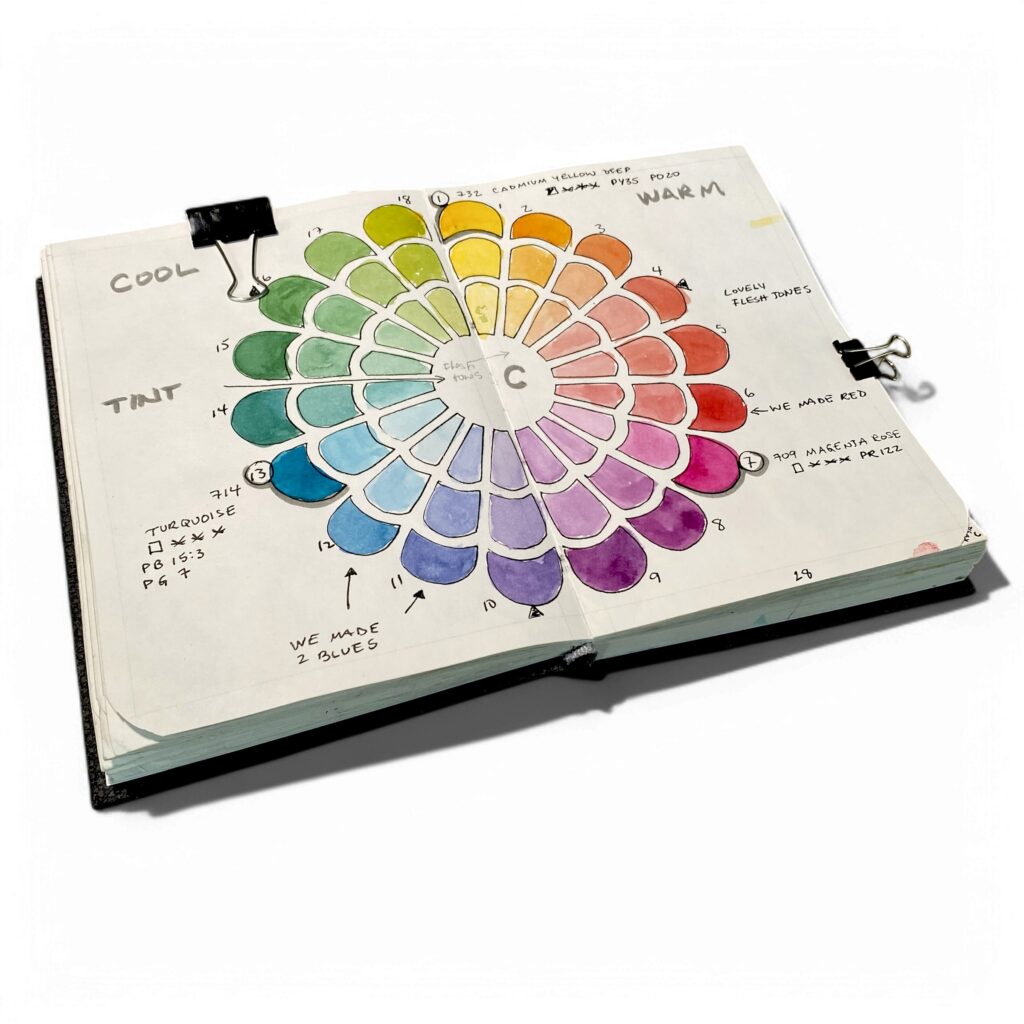
The key to colour-mixing is incremental and gradual addition of one colour to another. Only practice through repetition will make mixing the perfect colour easy and intuitive. Here is a visual depiction of the approximate rations.
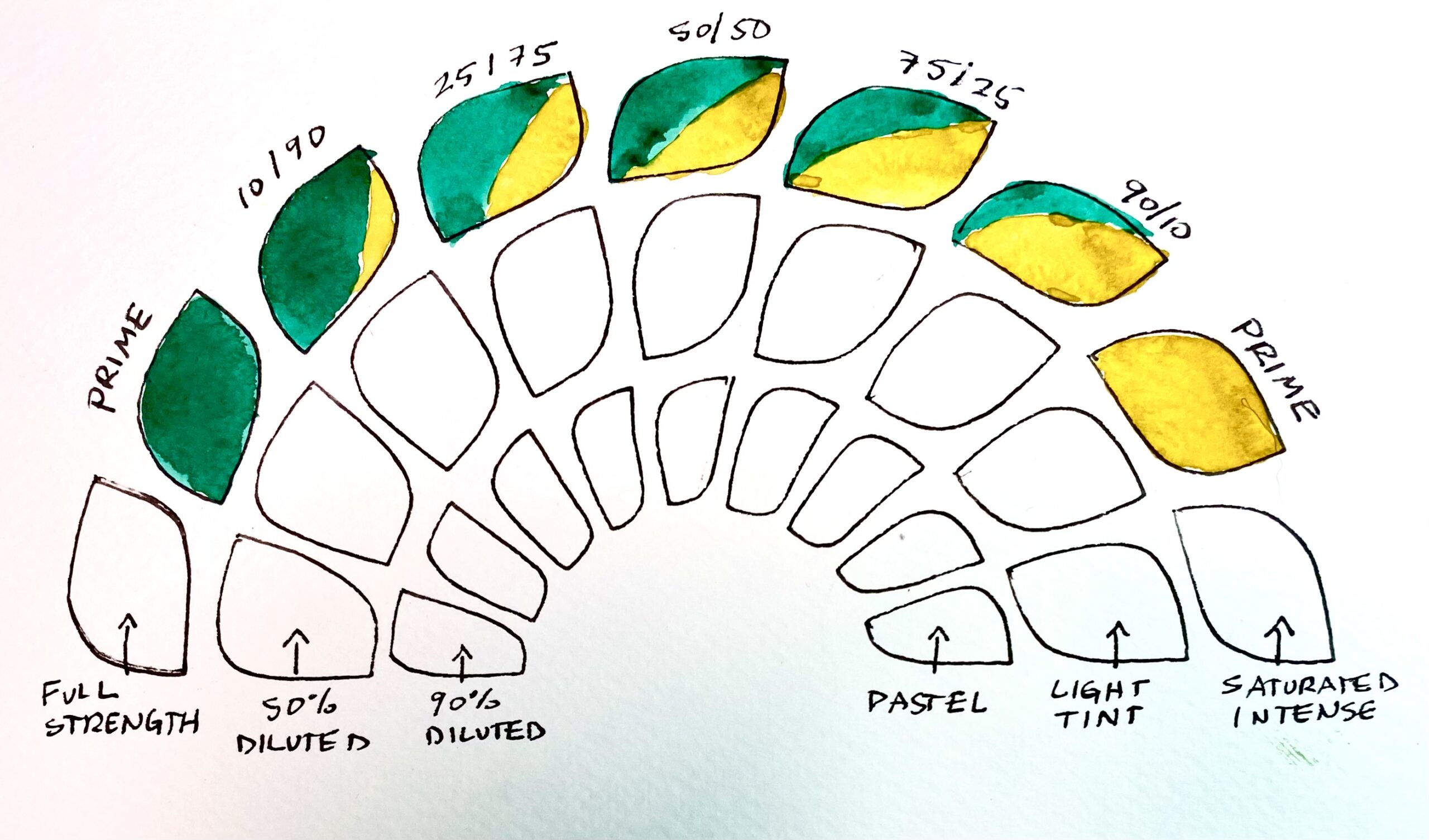
There are 5 spaces between each prime to allow for 50% to 50% mix on the middle space and two increments toward one colour and two increments toward the other colour. Don’t over-think the percentages because it is not an exact science. Some pigments are stronger than others. Mix what looks good to your eye.

Even the tiniest amount of additional colour will create a distinctly new colour. As soon as you see a little shift in the green colour, jot it onto its place on the wheel. In the image above, can you see how the blue-green shifts from emerald green, sap green, lime green, towards yellow-green. See how the yellow is pulled gradually from a golden green towards the other greens. Try to make an even transition from one prime to the next.
Next, create 2 diluted versions of each green you just created. To dilute your colour thin it with water. The first ring will be about 30%-50% water and center ring will be the lightest and maybe up to 90% water.
Repeat this process two more times to fill the range between the next two primes to complete the whole colour-circle.
Experiment With a Different Set of Primes
Even a slight change of primes will make a very different colour range.
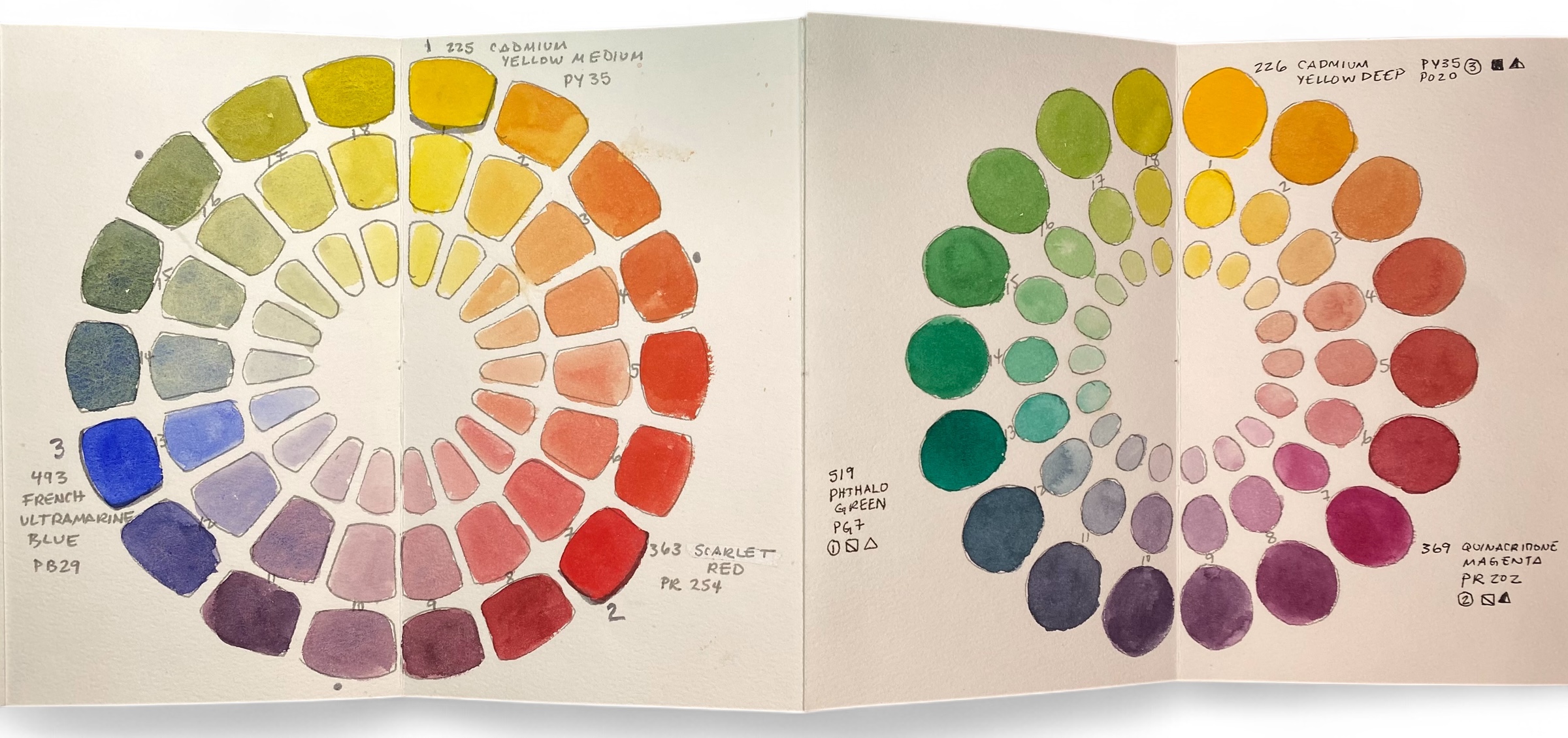
In the ColourJot process, prime does not necessarily mean primary. A colour circle and grid may also be made using only secondary or even random colour. Have fun experimenting with unusual colour combinations. The goal is to find your own colour story to make your art unique and your art journal an interesting reference for future painting or series of paintings.
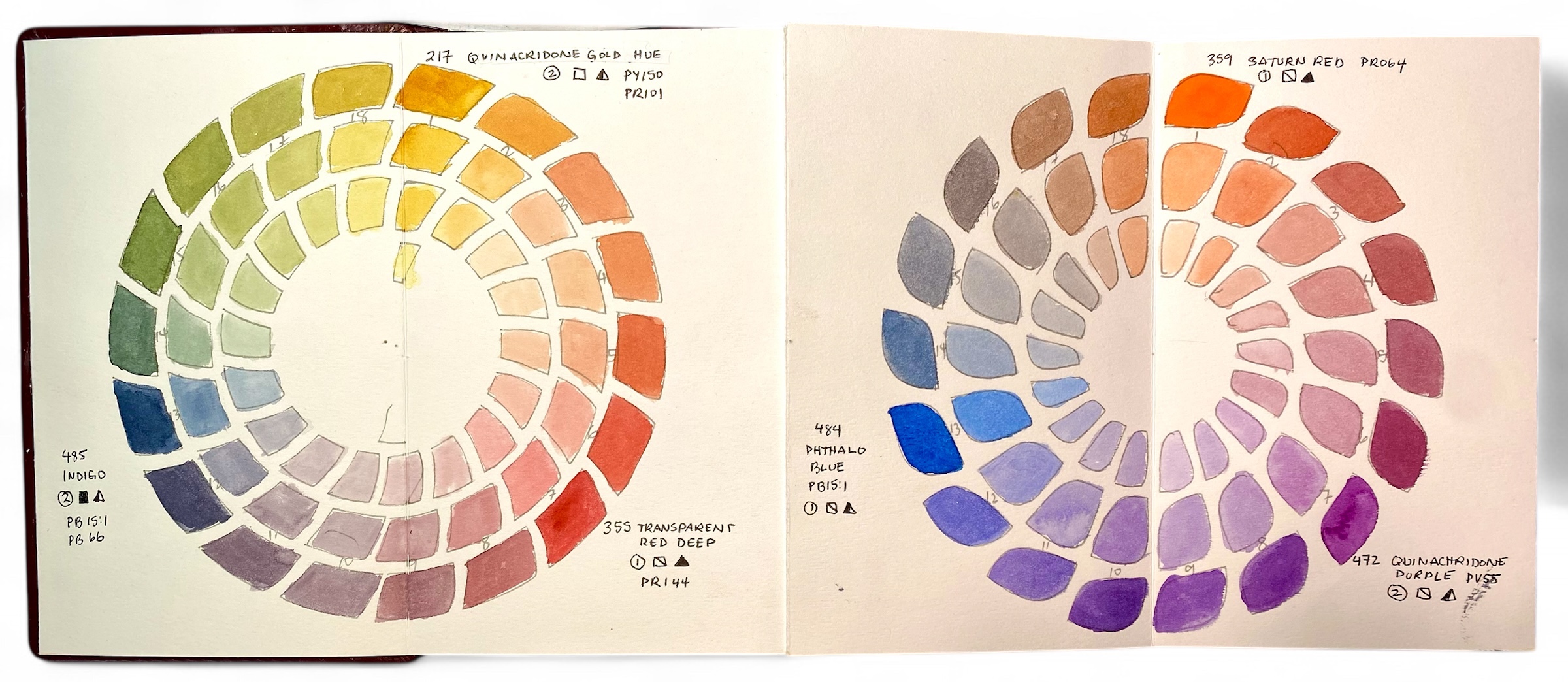
Tips for Quick ColourJotting.
During in-person classes, we found it was faster to jot the mixes onto the colour grid at the same time as the colour circle. It will take practice and discipline but it makes sense to have your colour circle and colour grid match. Alternatively, you can mix the colour transitions again onto the colour grid. On the circle, it was a discovery process on the grid it becomes a replication challenge.
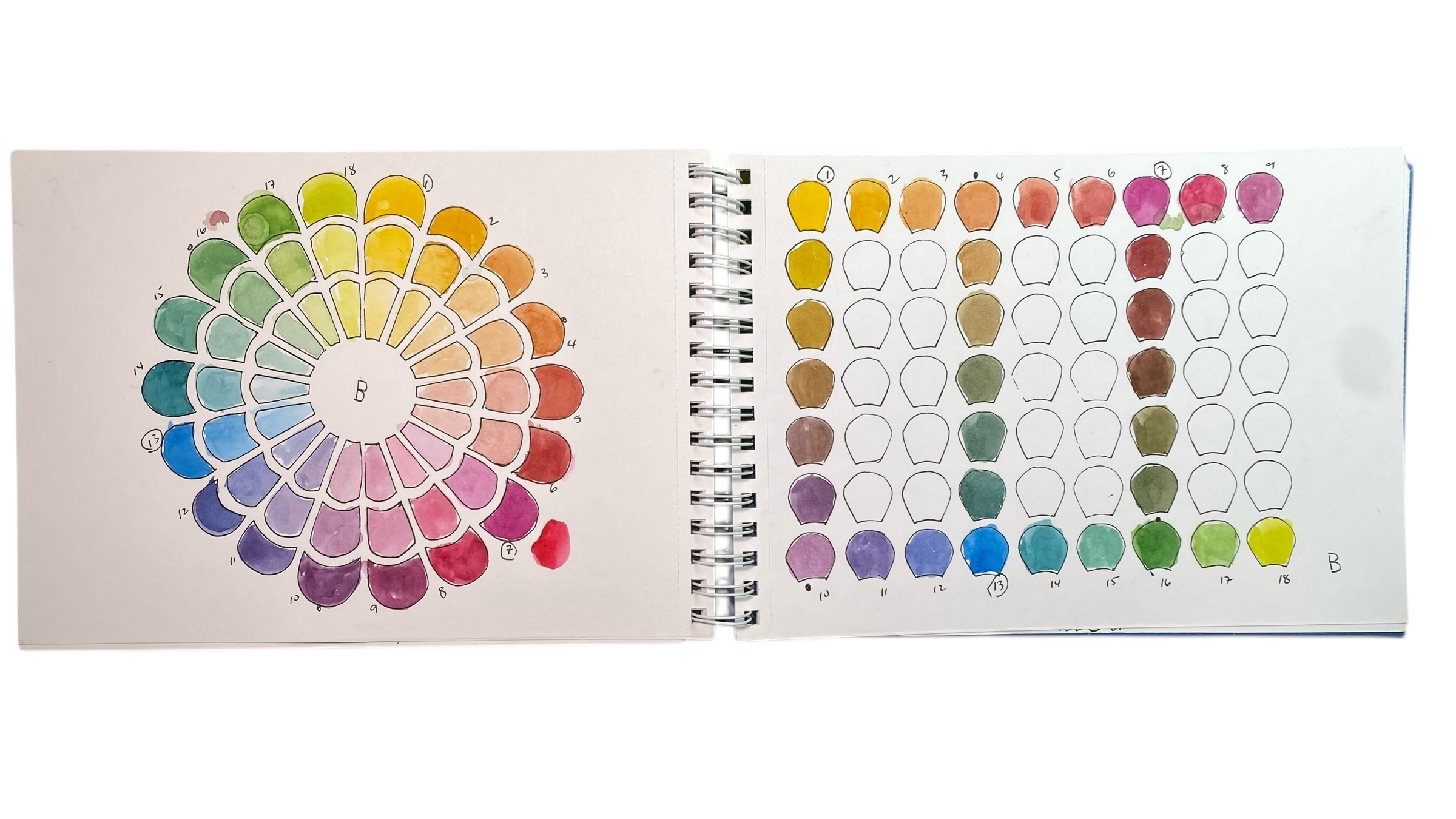
Practice Make Progress not Perfection.
ColourJotting is meant to be a relaxing, warm-up exercise, or a mindful activity. It is not meant to be stressful. So be kind to yourself as you develop your discerning-eye and brush-dexterity. Art journals also track artistic growth. Perfection is the not the goal. You are not required to stay in the lines or even paint right up the lines. Just jot your colour in quickly.
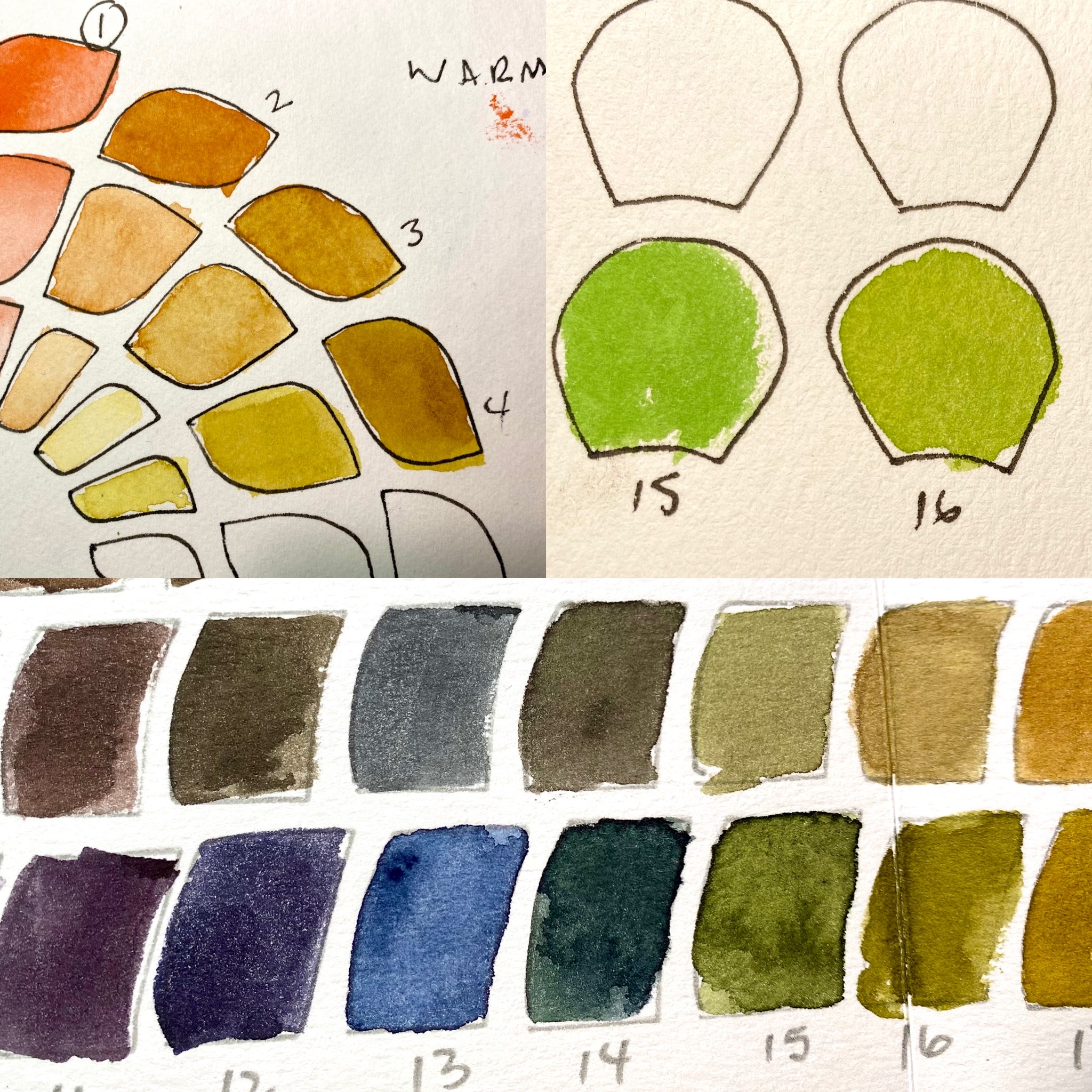
Share your discovers with @colourjot and #colourjot.